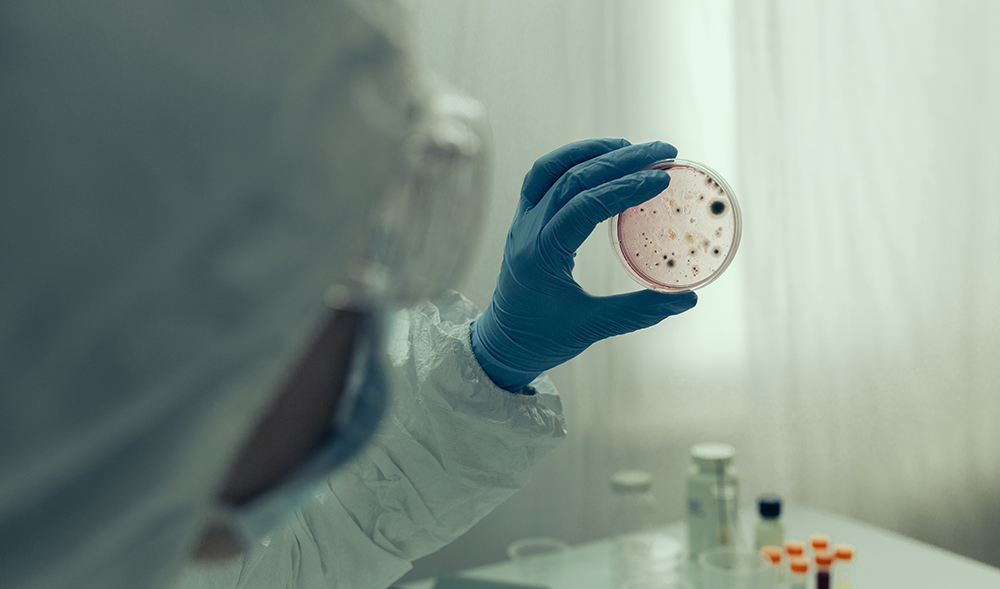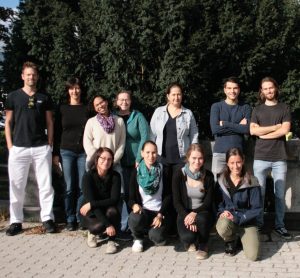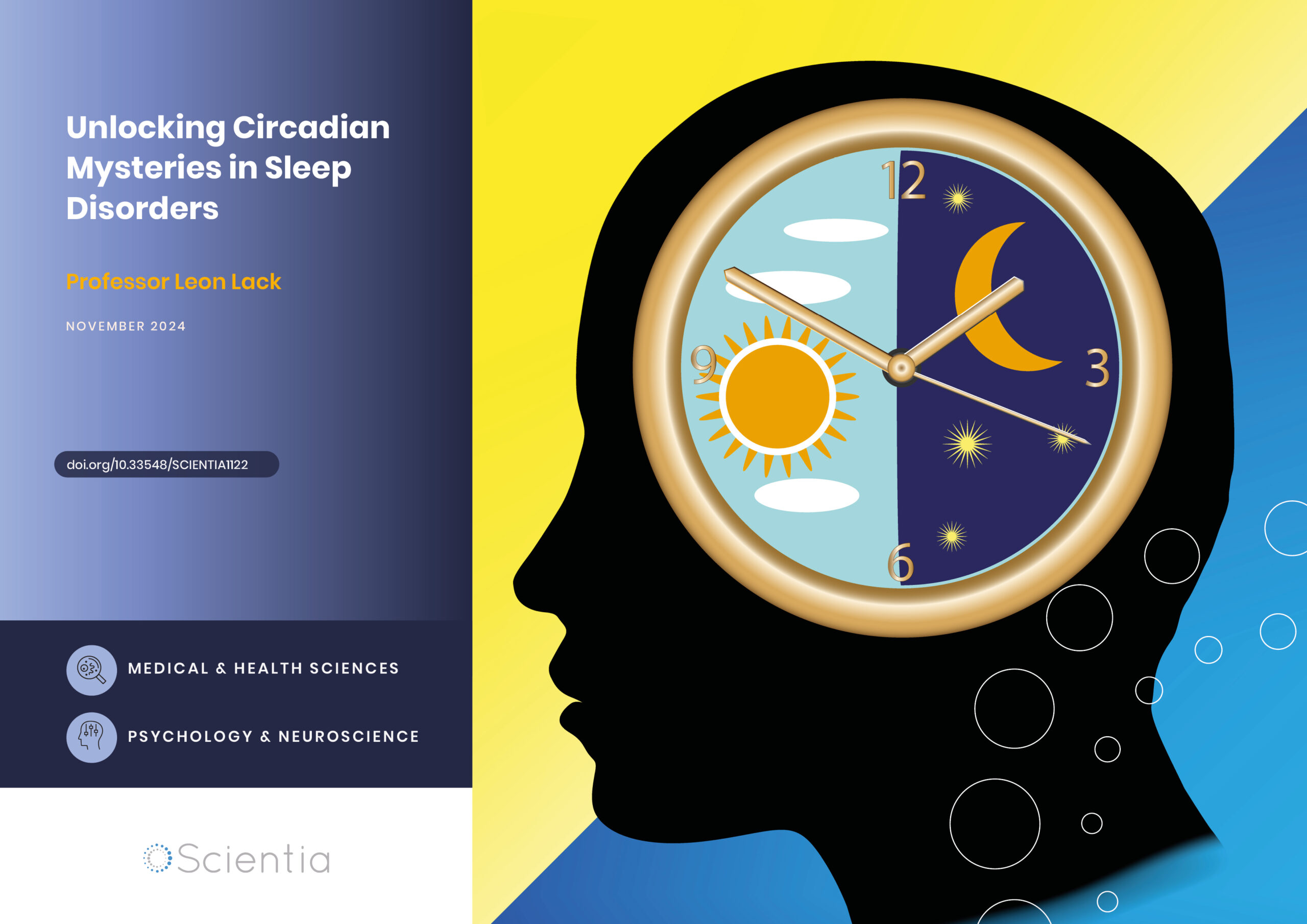Dr Susanne Zeilinger – Fighting Fungi with Fungi: Utilising Chemical Warfare for Human Benefit
Fungi feeding on other fungi (mycoparasites) represent a promising alternative to chemical fungicides for plant disease control. They also have potential applications in medicine and across industry. Dr Susanne Zeilinger and her team from the University of Innsbruck in Austria are working to identify and characterise the genes and gene products that are active during the interactions of antagonistic fungi. This critical work is paving the way for improvement of fungal strains as biotechnological workhorses in plant protection and beyond.
A Fungal Problem with a Fungal Solution
Fungal pathogens causing plant disease and consequent losses in crop yield pose a common problem in agriculture. The problem isn’t just one of a reduction in crop productivity; the application of pesticides leads to pollution of the environment, including soil and water contamination, and bioaccumulation problems further up the food chain. Perhaps even more worryingly, the intensive application of chemical fungicides for plant disease control often renders plant-pathogenic fungi resistant to the chemicals used to control them, thus requiring application of ever-increasing amounts of fungicides for their control and causing further problems for the local environment. With pests and pathogens evolving at a faster rate than the new chemistry required to control them, the race is on to find natural alternatives.
A more sustainable alternative to chemical fungicides is the use of antagonistic micro-organisms and mycoparasites, such as fungi feeding on other fungi. Such mycoparasites represent a promising option for plant disease control. With this in mind, Dr Susanne Zeilinger and her colleagues from the University of Innsbruck in Austria have been studying species of filamentous fungi with mycoparasitic properties to better understand the mechanisms on a system level that make these species superior in their parasitism of other fungi. The team’s long-term goal is for the results of this research to be used to improve the use and application of mycoparasitic fungi in agriculture and the wider industry.

‘Filamentous fungi are of great importance to mankind’ explains Dr Zeilinger. ‘Consequently, we are interested in the improvement of fungal strains as biotechnological workhorses for the production of valuable products such as enzymes and secondary metabolites, as well as on improving mycoparasitic fungi or their metabolites as biofungicides for plant protection.’
The team’s focus has been on fungi of the genus Trichoderma. These species are outstanding among filamentous ascomycetes due to their high adaptability to various ecological conditions and a variety of lifestyles. They live in soil and grow on dead wood, bark, and many other substrates, and interact with animals, plants and other fungi. The ability to parasitically antagonise and kill other fungi is widespread among Trichoderma spp., and upon contact, these mycoparasites secrete prey-damaging substances and attach to their prey, often coiling around the prey hyphae, forming infection structures to aid in penetration.
Dr Zeilinger and her colleagues have also carried out studies on Clonostachys rosea, a fungus which has similar mycoparasitic traits to fungi of the Trichoderma genus. In recent years, C. rosea has emerged as an effective biocontrol agent of several important plant diseases. Strain IK726, used for whole genome sequencing, has been isolated from barley roots infected with Fusarium culmorum and has been proven to be highly efficient as a biocontrol agent against a wide range of fungal pathogens of agricultural and horticultural crops.
‘Our particular focus has been on secondary metabolites – their role in microbial communication and chemical warfare.’

Identifying the Signalling Pathways Used to Sense Fungal Prey
Previously, studies of the molecular aspects of the modes of action of mycoparasitic fungi typically relied on the analysis of single genes. However, recent sequencing of the genomes of selected mycoparasitic fungi has paved the way for more detailed high-throughput studies. Dr Zeilinger and her team have used such techniques to determine how Trichoderma spp. communicate and the signalling pathways involved. ‘We are interested in the signals that fungi use to communicate with each other and other microbes’ says Dr Zeilinger. ‘We want to identify the receptors involved in sensing and the major signal transduction pathways that they are connected to, together with an exact characterisation of the cellular response triggered by the microbial signals.’
The mycoparasitic fungus-fungus interaction is a complex, multistage process. In Trichoderma, the mycoparasite is first attracted to its prey probably by small molecules released from the prey before contact. ‘We have been working to identify and characterise the genes and gene products that are active during the interaction of antagonistic fungi with other microbes’ explains Dr Zeilinger. ‘Our particular focus has been on secondary metabolites – their role in microbial communication and chemical warfare.’ Fungi are rich sources of such secondary metabolites – small bioactive molecules that are of medicinal and agricultural importance, that also contribute to fundamental cellular processes like defence, communication with other (micro-) organisms, or virulence in pathogenic interactions.
One of the projects that Dr Zeilinger and her team are currently working on aims to elucidate the role of chemical cross-talk between the mycoparasite and its prey in triggering secondary metabolite production and in mediating the mycoparasitic fungus-fungus interaction. In this case, the mycoparasite being studied is Trichoderma atroviride, and the plant pathogen is Botrytis cinerea (grey mould). The team is employing cutting-edge technology in a novel integrative approach for detection and spatial localisation of small molecules produced and exchanged between the two fungi, using mass spectrometric imaging, high resolution metabolomics (the large-scale study of metabolites), live cell imaging and gene expression analysis.
Once a mycoparasite has recognised its fungal prey, a signalling cascade is initiated that triggers downstream responses. As part of their research into Trichoderma spp., Dr Zeilinger and her team have identified that Gpr1, a specific cell surface receptor, is essential in governing mycoparasitism-related processes. In the absence of Gpr1, they found that T. atroviride was effectively ‘blind’ – being unable to recognise and attach to the prey fungus. It was impaired in its ability to produce certain ‘molecular weapons’ such as hydrolytic enzymes involved in prey lysis and attack. A screen for proteins interacting with Gpr1 also led Dr Zeilinger and her team to identify a fungal-specific protein (of the Sur7 superfamily), which co-localises with Gpr1 in the fungal membrane, and whose absence also impairs the mycoparasitic activity of the fungus.
The team’s work showed that the fungus reduces the expression of enzymes required for metabolism of simple sugars during the early interaction with a prey fungus, whereas several genes involved in attack and defence against the prey are up regulated. Gpr1 not only affects the expression of mycoparasitism relevant genes, but also of genes involved in defence reactions and other signal transduction pathways, and hence seems to have a broad effect on the cellular outcome. The results of this project have given Dr Zeilinger and her team a better understanding of the cellular responses of T. atroviride during prey recognition and the role the Gpr1 receptor plays in this process, which, from a long-term perspective, may contribute to improvement of Trichoderma spp. as biocontrol agents.

Making Mycoparasitic Fungi Work for Us
Owing to their ability to parasitise plant pathogenic fungi and to boost plant defence against invading pathogens even at sites away from the point of application, Trichoderma spp. are already widely used in today’s agriculture as commercial biofungicides and biostimulants. In fact, mycoparasitic Trichoderma spp. and C. rosea are not only antagonists of other fungi, but are also capable of colonising and establishing on living plant roots. Root colonisation often results in beneficial effects on the plants, such as growth stimulation and elicitation of plant defence, as well as imparting tolerance to abiotic stresses such as drought.
The research of Dr Zeilinger and her team has industry-wide applications in improving knowledge of the mechanisms by which these fungi interact with their prey and host plants, and the proteins directly responsible for eliciting responses and triggering the signalling pathways in these mycoparasites. ‘We hope that our studies will lead to the development of enhanced and tailor-made applications of antagonistic fungi’ explains Dr Zeilinger.
The results from the team’s work into the secondary metabolites produced by Trichoderma spp. also have broad cross-industry implications and the secondary metabolites produced by mycoparasites in general bear great potential for a variety of applications. Since the 1930s, a plethora of substances has been reported from Trichoderma spp. with more than 1000 compounds being estimated to be produced by fungi of this genus. For example, the nonribosomal peptide, gliotoxin, is produced by Trichoderma virens ‘Q’ strains, and gives very effective control of cotton seedling disease.

Another species within the Trichoderma genus produces the fungistatic and anticancer steroid viridian, which can be reduced to viridiol, a compound with herbicidal properties. There are also applications of trichodermal VOCs in crop storage, the potential of the lipopeptaibol, trichogin GA IV, as a selective antibiotic, and of one particular Trichoderma-produced compound as a food flavouring agent.
Detailed knowledge of the biosynthetic machinery and the biotic and abiotic factors triggering secondary metabolite production in Trichoderma will allow the tailor-made application of these fungi in biocontrol; one of the key goals of Dr Zeilinger and her team. Longer-term this should lead to the generation of strains producing adequate amounts of pharmaceutically and biotechnologically interesting substances.
As of today, biosynthetic genes for only a handful of compounds have been linked to the biosynthesised compound in mycoparasitic fungi. However, this scenario is expected to change rapidly as several genomes have already been sequenced and as functional genomics studies in Trichoderma advance. As more and more biosynthetic genes/gene clusters are identified, we can hope for the elucidation of pathways of the known metabolites as well as the discovery of novel substances. The possibilities for mycoparasitic fungi as biotechnical workhorses, could, therefore, be endless.
Reference
https://doi.org/10.33548/SCIENTIA464
Meet the researcher

Dr Susanne Zeilinger and her Team.
Dr Susanne Zeilinger
Professor of Microbiology
Department of Microbiology
University of Innsbruck
Innsbruck
Austria
Dr Susanne Zeilinger is a Professor of Microbiology at the University of Innsbruck, Austria, where she is also Deputy Head of the Department of Microbiology. Dr Zeilinger’s research focuses on microbial interactions, with a special emphasis on fungal mycoparasites, and she is internationally recognised as an expert in mycoparasitism and fungus-fungus interactions. Her research areas include the investigation of the molecular details of gene regulation of the interaction partners and signal transduction processes involved in microbial communication and recognition processes. Dr Zeilinger is also Associate Editor of the journal Frontiers in Microbiology (Fungi and their Interactions), as well as an editorial board member for several other prestigious microbiology journals.
CONTACT
E: Susanne.zeilinger@uibk.ac.at
W: https://www.uibk.ac.at/microbiology/team/susanne-zeilinger/index.html.en
KEY COLLABORATORS
Dr Lea Atanasova, University of Natural Resources and Life Sciences, Vienna, Austria
Dr Sabine Gruber, University of Innsbruck, Austria
Dr Magnus Karlsson, Swedish University of Agricultural Sciences, Sweden
Dr Alex Lichius, University of Innsbruck, Austria
Dr Martina Marchetti-Deschmann, TU-Wien, Austria
Dr Artemio Mendoza-Mendoza, Lincoln University, New Zealand
Dr Rainer Schuhmacher, University of Natural Resources and Life Sciences, IFA-Tulln, Austria
FUNDING
The Vienna Science and Technology Fund, WWTF
The Austrian Science Fund, FWF
The Austrian Academy of Sciences, ÖAW
FURTHER READING
L Atanasova, S Gruber, A Lichius, T Radebner, L Abendstein, M Munsterkotter, N Stralis-Pavese, P Labaj, D Kreil, S Zeilinger, The Gpr1-regulated Sur7 family protein Sfp2 is required for hyphal growth and cell wall stability in the mycoparasite Trichoderma atroviride. Nature Scientific Reports, 2018, 8, 12064.
M Karlsson, L Atanasova, D Funck Jensen, S Zeilinger, Necrotrophic mycoparasites and their genomes. Microbiology Spectrum, 2017, 5, 1005–1026.
S Zeilinger, S Gruber, R Bansal, P Mukherjee, Secondary metabolism in Trichoderma – Chemistry meets Genomics. Fungal Biology Reviews 2016, 30, 74–90.
M Omann, S Lehner, C Escobar Rodriguez, K Brunner, S Zeilinger, The seven-transmembrane receptor Gpr1 governs processes relevant for the antagonistic interaction of Trichoderma atroviride with its host. Microbiology, 2012, 158, 107–118.
I Druzhinina, V Seidl-Seiboth, A Herrera-Estrella, B Horwitz, C Kenerley, E Monte, P Mukherjee, S Zeilinger, I Grigoriev, C Kubicek, Trichoderma: the genomics of opportunistic success. Nature Reviews: Microbiology, 2011, 9, 749–59.

Creative Commons Licence
(CC BY 4.0)
This work is licensed under a Creative Commons Attribution 4.0 International License. 
What does this mean?
Share: You can copy and redistribute the material in any medium or format
Adapt: You can change, and build upon the material for any purpose, even commercially.
Credit: You must give appropriate credit, provide a link to the license, and indicate if changes were made.
More articles you may like
Professor Aristides Marcano Olaizola | Innovation in the Production of Singlet Oxygen
A novel method for producing singlet oxygen via stimulated Raman scattering (SRS) offers an innovative alternative to traditional photosensitizer-based techniques, promising safer and more efficient applications in disinfection, cancer treatment, and beyond. Professor Aristides Marcano Olaizola at Delaware State University is driving innovation in this critical field.
Dr Marta Berrocal-Lobo | Unlocking the Potential of Essential Oils: Illuminating Epigenetic Effects on Plant Defense Mechanisms
Essential oils (EO) are potent in enhancing plant stress responses and mitigating seed-borne diseases, particularly in high-value crops such as tomatoes. While their direct impacts are recognised, the indirect influences on plant growth, metabolism, and immune responses against phytopathogens remain uncertain. Dr Marta Berrocal-Lobo, an esteemed Associate Professor and researcher at the Polytechnic University of Madrid, in collaboration with the Group of Biopesticides led by Dr Azucena Gonzalez-Coloma, is unravelling the transcriptomic and metabolic responses of tomato seeds treated with an antifungal EO against the pathogen Fusarium oxysporum sp. Their findings pave the way for harnessing EO in sustainable agriculture.
Dr Linda Hammerich | Revolutionising Immune Monitoring with Flow Cytometry
Understanding the individual immune response is key to diagnosing and treating a range of diseases. One way of characterising immune cells is through flow cytometry, where cells are tagged with fluorescent markers known as fluorochromes. Detectors use these markers to understand the different physical and chemical features of the individual cells and the overall immune cell population. Dr Linda Hammerich and a team from Charité-Universitätsmedizin in Germany have optimised this technique to investigate up to 31 different cells or markers from one blood test using currently available technology.
Dr Leon Lack | Unlocking Circadian Mysteries in Sleep Disorders
Sleep disorders can significantly disrupt daily life, but their underlying causes are not always clear. Dr Leon Lack from Flinders University has spent decades studying these disorders and how to treat them. By shedding light on the role of circadian rhythms in delayed sleep-wake phase disorder and non-24-hour sleep-wake rhythm disorder, he hopes to unravel why some people struggle to maintain conventional sleep patterns and could lead to more effective treatments for these challenging conditions.




